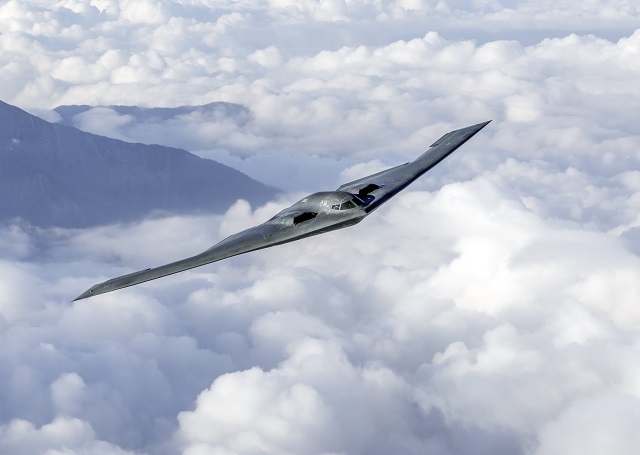Long-Range Strike Bomber advocates are calling on the US air force to drop its “squishy” requirement for 80 to 100 next-generation heavy combat aircraft to replace the B-1B and B-52 and instead focus on the "bare minimum" number of 100.
The call comes amid concern that statements by senior air force leaders about the need for “80 to 100” production bombers makes the requirement seem weak and unanalysed, which could put the programme at risk when US lawmakers decide levels of funding for the programme.
“Eighty to 100 just makes you look squishy; like your analysis wasn’t rock-solid,” defence analyst Mackenzie Eaglen of the American Enterprise Institute explained at an LRS-B forum in Washington this week. “Congress is always going to take the low end of your bet.
“The air force came in with a weak opening hand, and they should just forever put a stake in the heart of 80 in the requirement and just talk about the bare minimum of 100.”
David Deptula, dean of the Air Force Association’s (AFA) Mitchell Institute, argues for at least 174 new bombers, comprised of 12 ready squadrons of 10 combat-coded aircraft plus another 54 for training and attrition reserve.
The debate over force structure numbers will likely feature in a looming “budget war” between competing air force priorities from now into the mid-2020s as the LRS-B programme accelerates.

B-2A creator Northrop Grumman has been chosen to deliver the LRS-B, or B-X, stealth bomber.
Northrop Grumman
When it comes to annual appropriations, Teal Group vice-president Richard Aboulafia says the $80 billion programme, recently award to Northrop Grumman, will face internal and external competition from the Lockheed Martin F-35 and Boeing KC-46, but also smaller but important demands like the T-X next-generation training jet and “JSTARS” recapitalisation.
Aboulafia contends that keeping the LRS-B subcontractor base secret also puts the programme at a disadvantage against F-35 and KC-46 because the industrial implications of those programmes and their impact on local economies are well documented and noted by lawmakers. While some defence hawks in Congress are pushing the bomber as a national security priority, “about 95%” are concerned about jobs in their districts, he says.
“More dissemination about where it’s built and the economic footprint per area will get people onboard,” Aboulafia said at the 10 November forum, hosted by AFA. “KC-46 and the massive subcomponent family of F-35, they’ll have strong political advantage in the budgetary wars.”
According to Eaglen, Pentagon officials are concerned about a general deterioration of America's technological military edge, but mostly within the air force.
Those officials are also pushing for more spending on space-based capabilities, she says, and an expensive recapitalisation of the nuclear triad, to include the new bombers as well as intercontinental ballistic missiles and cruise missiles. However, the biggest budgetary competition is between LRS-B and the funding demands for F-35 production, she says.
“The air force budget is not equipped to fully support this programme already,” she says. “The bomber will compete forever with the F-35, and let’s hope we don’t have sore losers.”
LRS-B is expected to cost $23.5 billion to develop and a further $564 million per aircraft. The award to Northrop last month is currently subject to a bid protest by the losing team, Boeing and Lockheed Martin.
Source: FlightGlobal.com
















